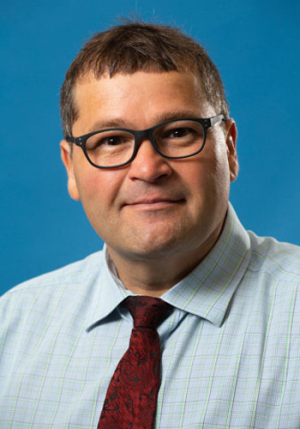For as long as the U.S. Navy has had scuba divers, submarines and airplane pilots, it has had to deal with the effects of decompression sickness. This condition, which affects those who experience sudden, drastic changes in the air or water pressure surrounding their bodies, can cause anything from joint pain—better known as the bends—to seizure, stroke, coma, and, in the most extreme cases, death.
Now, the Navy, through its Office of Naval Research, has awarded a researcher with the University of Houston Cullen College of Engineering a $400,000 grant to develop a non-invasive tool that can diagnose decompression sickness before its effects are felt.
“Most of the time decompression sickness isn’t addressed until the person starts showing clinical symptoms,” said Kirill Larin, assistant professor of biomedical engineering and mechanical engineering. “It would be better, of course, to treat the problem before the symptoms appear. That would allow individuals to take the appropriate medical actions that would reduce the side effects of decompression sickness. Thus, a person with decompression sickness would recover more quickly and experience less discomfort.”
Such a diagnosis would be possible through a novel optical device Larin, along with Dr. Bruce Butler from UT Health Science Center in Houston, is developing, which can locate the presence of microbubbles in blood and tissues.
These bubbles of nitrogen gas can restrict the flow of blood throughout the body and damage tissue, resulting in decompression sickness. Currently, there’s no proven method to detect the presence of microbubbles in a quick, non-invasive manner.The device being developed by Larin would fill that need.
The tool works much like an ultrasound machine. Instead of getting readings using sound waves, however, Larin’s system uses light waves in the form of lasers that bounce back when they encounter resistance, thereby providing an image. The nature of the light waves the device uses allows for a much higher resolution than ultrasound. According to Larin, an early version of the tool has been able to locate features as small as six micrometers. Most microbubbles are between 5 and 15 micrometers, about the size of a red blood cell.
Eventually the Navy could use this technology on all divers or pilots returning to the surface. By shining the device’s laser on one of these individuals, in a matter of seconds it would provide an image that would reveal the presence of any microbubbles in the blood or tissue. If microbubbles are found, then appropriate medical steps—typically time in a decompression chamber—could be taken before the symptoms appear.
Such a device could also find use at the International Space Station, where individuals moving from a ship to the station have suffered from the effects of microbubbles. Hospitals near popular recreational scuba diving sights could also find this tool useful, Larin said.
Should Larin prove successful in his research, everyone from highly trained naval divers and pilots, to astronauts and even seaside vacationers could benefit.
